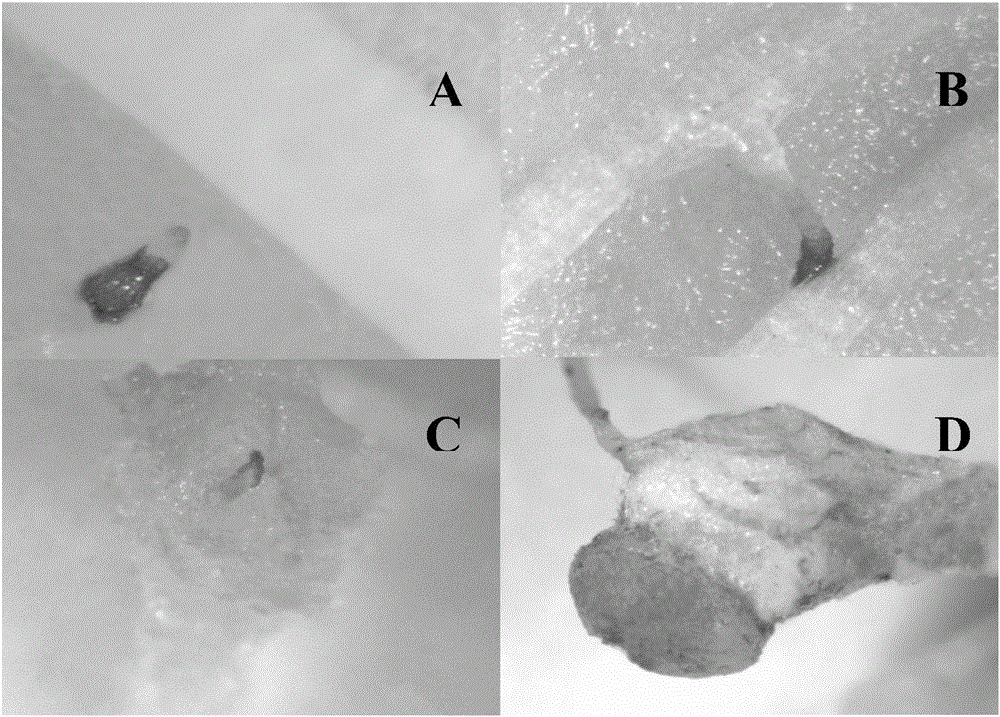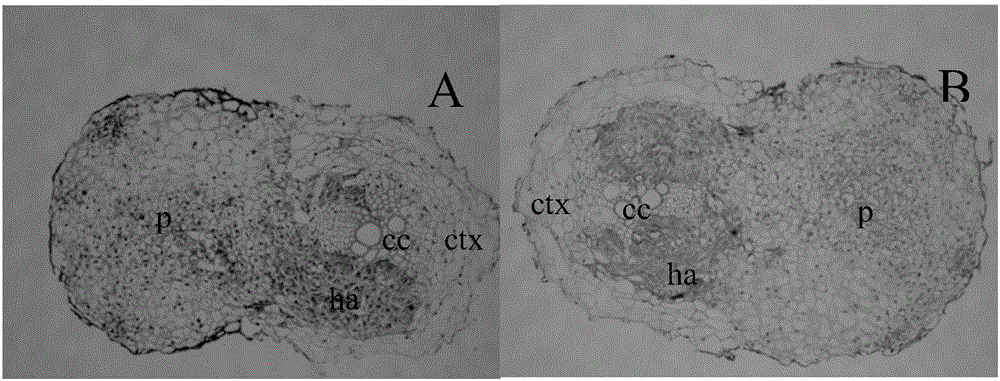Co-culture method for researching interaction between parasitic weeds and host crops
A host crop and co-cultivation technology, applied in the directions of botanical equipment and methods, cultivation, and application, can solve problems such as unfavorable root parasitic weeds and host crop research, and achieve the effects of preventing proliferation, reducing time, and improving efficiency.
- Summary
- Abstract
- Description
- Claims
- Application Information
AI Technical Summary
Problems solved by technology
Method used
Image
Examples
Embodiment 1
[0050] The co-cultivation method was used to observe the interaction between Orobanche cumana Wallr and sunflower in different periods.
[0051] 1) Seed disinfection: Wrap the sunflower seeds with 2 layers of tea bag paper and seal them, then soak them in 70% alcohol for 2 minutes and disinfect the solution containing 0.2% Tween-20 and 2% sodium hypochlorite for 10 minutes for surface disinfection. Stir, and when the color of the disinfectant turns from black to brown or brown, the disinfection is completed; the sterilized seeds are rinsed 10 times with sterile distilled water; the sunflower seeds are surface-sterilized in 5% sodium hypochlorite solution for 20 minutes, and then rinsed with sterile distilled water for 5 minutes. Second-rate.
[0052] 2) Pre-cultivation of parasitic weed seeds: put glass fiber filter paper in a petri dish with a diameter of 9 cm, and moisten it with 5 ml of sterile distilled water, then evenly sprinkle the sunflower Liedang seeds on the filter ...
Embodiment 2
[0057] This co-cultivation method is used for the material preparation of paraffin sections in the late stage of parasitism of sunflower regrowth.
[0058] (1) Material preparation
[0059] 1) Seed disinfection: Wrap the sunflower seeds with 2 layers of tea bag paper and seal them, then soak them in 70% alcohol for 2 minutes and disinfect the solution containing 0.2% Tween-20 and 2% sodium hypochlorite for 10 minutes for surface disinfection. Stir, and when the color of the disinfectant turns from black to brown or brown, the disinfection is complete; the sterilized seeds are rinsed 6 times with sterile distilled water; the sunflower seeds are surface-sterilized in 5% sodium hypochlorite solution for 20 minutes, and then rinsed with sterile distilled water for 3 Second-rate.
[0060] 2) Pre-cultivation of parasitic weed seeds: put glass fiber filter paper in a petri dish with a diameter of 9 cm, and moisten it with 5 ml of sterile distilled water, then evenly sprinkle sunflow...
PUM
 Login to View More
Login to View More Abstract
Description
Claims
Application Information
 Login to View More
Login to View More - R&D
- Intellectual Property
- Life Sciences
- Materials
- Tech Scout
- Unparalleled Data Quality
- Higher Quality Content
- 60% Fewer Hallucinations
Browse by: Latest US Patents, China's latest patents, Technical Efficacy Thesaurus, Application Domain, Technology Topic, Popular Technical Reports.
© 2025 PatSnap. All rights reserved.Legal|Privacy policy|Modern Slavery Act Transparency Statement|Sitemap|About US| Contact US: help@patsnap.com


